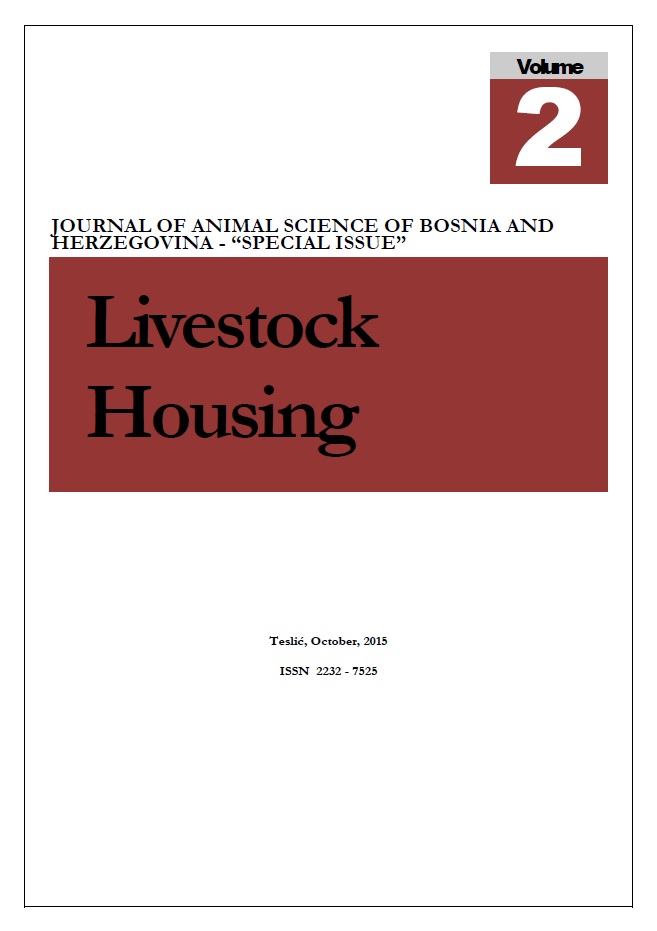PRODUCTION OF DAIRY COWS AT DIFFERENT ENVIRONMENTAL CLIMATIC PARAMETERS
DOI:
https://doi.org/10.7251/JAS1502019MAbstract
Cattle have a constant body temperature, which held up to a certain limit. Due to changing ambient climatic parameters (temperature, humidity, THI index), can lead to certain consequences which have a deleterious effect on the health of the animals, and even can cause death of the animal. The assumption of this research was that the environmental climatic parameters have an impact on cows in milk production.
The study involved 50 Holstein cows, which were divided in the same building and in the two groups: the first (n = 25) = 30 kg milk and 2 (n = 25) = 30 and more kg of milk. The results showed that the surface temperature of the body was measured on the left side of the body cows (area rumen) increased no matter what was the level of milk production. However, the surface temperature of the udder measured from the back of the cows showed a different trend. The temperature of the udder of the cow in the first (with a milk production of less than 30 kg) was constant (average of 34.95 ° C), in contrast to the other groups of cows (with a milk production of 30 kg or more), where the surface temperature is increased as the udder increased and THI index in the barn.
The increase in metabolic activity in animals (such as dairy cows) and leads to an increase in surface heat in certain parts of the body, and what is even more pronounced when the animals are in inadequate surroundings or barn that is not adapted to cows with high milk production.

